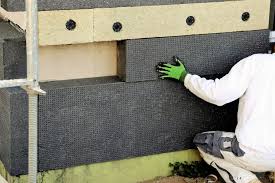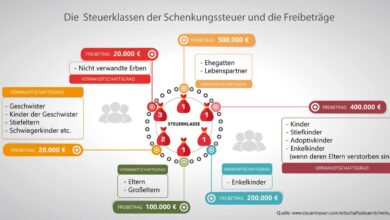The Ultimate Guide to Außendämmung Benefits Methods, and Choosing the Right Insulation for Your Home

In recent years, the importance of energy efficiency in homes has become more evident than ever. As energy costs rise and environmental concerns increase, homeowners are looking for solutions to reduce energy consumption and make their homes more sustainable. One such solution is Außendämmung, or external insulation. This method has gained popularity due to its effectiveness in enhancing thermal performance, reducing heating costs, and contributing to a greener environment.
In this comprehensive guide, we will explore what Außendämmung is, its benefits, various methods of applying it, and how to choose the right insulation for your home.
What is Außendämmung
Außendämmung refers to the practice of insulating the exterior of a building to improve its energy efficiency. This process involves installing insulation materials on the outer walls of a house or building. It’s a highly effective way to prevent heat from escaping during the winter and keep the home cooler in the summer. By reducing the amount of energy required for heating and cooling, Außendämmung not only helps lower utility bills but also contributes to the overall comfort of the living space.
The Benefits of Außendämmung
1. Energy Efficiency
The primary benefit of Außendämmung is its ability to improve energy efficiency. Homes with external insulation are better able to retain heat in the winter and keep cool air inside during the summer. By reducing the need for artificial heating and cooling, homeowners can see significant reductions in their energy bills.
In fact, studies show that proper external insulation can reduce heat loss by up to 50%. This leads to lower energy consumption, making your home more eco-friendly and cost-efficient in the long run.
2. Improved Indoor Comfort
One of the immediate effects of Außendämmung is an increase in indoor comfort. External insulation helps maintain a stable indoor temperature throughout the year. Whether it’s cold and windy outside or hot and humid, your home will remain comfortable, with fewer temperature fluctuations.
In addition, insulation reduces drafts and cold spots near windows and doors, creating a more even and comfortable indoor climate.
3. Sound Insulation
In addition to thermal benefits, Außendämmung also offers soundproofing properties. The insulation materials used in the process help to reduce noise from the outside, such as traffic or neighbors. This added sound insulation is particularly beneficial for homes in noisy urban areas, providing a quieter and more peaceful living environment.
4. Preservation of Building Structure
By insulating the exterior of the building, Außendämmung helps protect the structural integrity of the walls. External insulation prevents condensation from forming on the walls, which can lead to the growth of mold and mildew. Moreover, the insulation acts as a barrier to weathering, preventing damage caused by extreme temperatures, moisture, and other environmental factors.
5. Increased Property Value
Homes with modern insulation systems, including Außendämmung, tend to have higher property values. Potential buyers are increasingly looking for energy-efficient homes, and a well-insulated home can be a key selling point. Investing in external insulation can increase the value of your property and make it more attractive on the real estate market.
Different Types of Außendämmung
There are several methods of applying Außendämmung, depending on the needs of the building, the local climate, and the desired outcome. Below, we will outline the most common types of external insulation systems.
1. External Thermal Insulation Composite Systems (ETICS)
ETICS is one of the most widely used methods for Außendämmung. This system consists of multiple layers, including insulation material, a reinforcing mesh, and a finishing plaster or decorative layer. The insulation material can be made from various substances, including polystyrene (EPS), mineral wool, or even cork.
ETICS systems provide excellent thermal insulation and are available in a variety of finishes, making them suitable for various building styles. They are commonly used for residential homes, but also for commercial and public buildings.
2. Wooden Cladding with Insulation
Wooden cladding combined with insulation is a natural and aesthetic way to insulate the exterior of a home. This method involves adding insulation material to the exterior walls and covering it with wood panels. The insulation material can be rigid boards or spray foam, depending on the preference.
This type of insulation offers a rustic and modern appearance, making it ideal for homes with a natural or contemporary design. Additionally, wood acts as a natural barrier against moisture, making this method particularly useful in areas with high humidity.
3. Ventilated Facade Systems
A ventilated facade is another method of Außendämmung that includes a gap between the insulation material and the outer cladding, allowing for air circulation. This system is particularly effective in regions with varying temperatures and humidity levels. The gap helps regulate moisture levels and prevents the insulation from becoming damp, which could lead to a decrease in its effectiveness.
Ventilated facades often use materials like stone, brick, or ceramic tiles for the outer cladding, providing both aesthetic appeal and functional insulation.
4. Spray Foam Insulation
Spray foam insulation is a relatively modern method for external insulation. It involves spraying a liquid foam onto the exterior walls, which then expands and hardens, providing an airtight seal and excellent thermal performance. Spray foam is highly effective at filling in gaps and cracks, making it an ideal choice for homes with irregular surfaces.
Although this method can be more expensive compared to other types of insulation, it offers superior energy efficiency and is particularly effective at preventing air leaks.
How to Choose the Right Außendämmung for Your Home
Choosing the right type of Außendämmung depends on several factors, including your budget, the climate in your region, the age and condition of your home, and the desired aesthetic outcome. Here are some considerations to help guide your decision:
1. Climate Considerations
The climate in your region plays a major role in determining which insulation method is best for your home. In colder climates, thicker insulation materials are necessary to prevent heat loss. On the other hand, in warmer climates, insulation should be selected to reflect heat and keep your home cool during the summer months.
For example, spray foam insulation may be ideal for cold regions, as it provides an airtight seal and keeps warm air inside. In milder climates, ETICS or ventilated facades could offer better cost-effectiveness.
2. Budget
The cost of insulation can vary significantly depending on the method you choose. ETICS and wooden cladding tend to be more affordable, while spray foam insulation can be more expensive due to its specialized application. When determining your budget, also factor in the long-term savings on energy bills, as higher upfront costs may be offset by lower energy consumption over time.
3. Building Type and Design
Older homes or those with intricate architectural features may require more specialized insulation methods, such as ventilated facades or wooden cladding, to preserve the structure’s aesthetics. Newer homes with more standard designs may benefit from the cost-effectiveness of ETICS or spray foam insulation.
4. Sustainability
If sustainability is a priority, consider insulation materials made from natural or recycled materials, such as cork, cellulose, or mineral wool. These materials are not only energy-efficient but also environmentally friendly, contributing to a greener home.
Conclusion
Außendämmung is an effective way to enhance the energy efficiency, comfort, and sustainability of your home. By choosing the right insulation method, you can reduce energy costs, increase property value, and create a more comfortable living space. Whether you opt for external thermal insulation composite systems, wooden cladding, spray foam, or another solution, the benefits of are clear.
In today’s world, where energy conservation and environmental sustainability are more important than ever, Außendämmung stands as a key strategy for homeowners looking to improve their homes’ energy efficiency and overall performance. So, take the time to assess your needs, consult with professionals, and make an informed decision that will not only benefit your home but also contribute to a greener planet.




